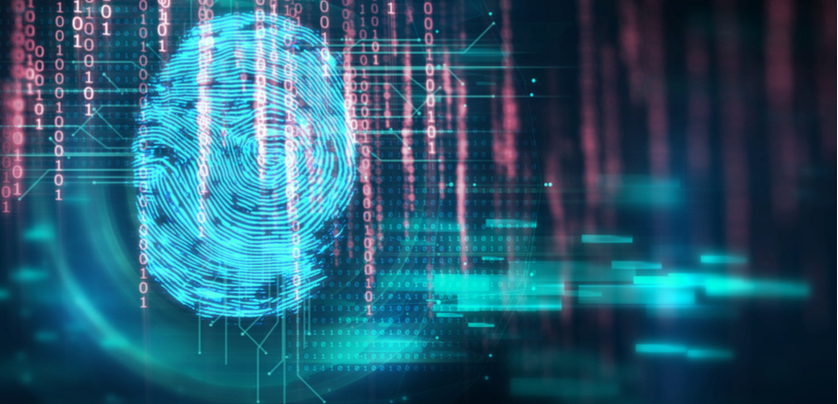In public safety, mobile device security is not a nice-to-have. Agency leaders must ensure the security of first responders’ smartphones and applications because failing to do so could result in unauthorized access to sensitive criminal justice information (CJI) and erode people’s trust in the agency.
To do this, decision makers must put in place strong but convenient authentication protocols to prevent unauthorized device and/or program access — and not add to the already challenging job of being a police officer. Biometric authentication — the most common form being fingerprint identification — is an effective and user-friendly way to significantly enhance a public safety agency’s security without burdening officers.
Replacing passwords and increasing security
Biometric authentication provide secure and rapid access to your smartphone — while overcoming many of the shortcomings of passwords. Agency-issued smartphones are likely need to run a myriad of public safety applications, so conventional passwords present a challenge.
Your guide to mobilizing law enforcement
Plan and implement a mobile initiative at your agency with this practical roadmap. Download Now
Passwords are vulnerable to compromise unless they’re regularly updated and sufficiently complex — which in turn makes them easy to forget. What’s worse, passwords are often stored in such a way that they’re easily accessible to unauthorized persons. Passwords are the weak link in agency security, and forgotten passwords tie up an inordinate amount of time for IT support, while decreasing officer productivity.
Conversely, biometric authentication is always available, impossible to forget and very difficult to compromise. Unsurprisingly, it’s finding increased use among agencies that are issuing full-capability smartphones to their officers.
Addressing officer safety and effectiveness
Biometric authentication fits a variety of use cases in law enforcement. For instance, many officers carry their smartphone on a belt or clip holster. With a little practice, they can quickly unlock their phone with the fingerprint reader as they pull out the device. This ensures the phone is ready to use by the time it’s in front of them, even if the phone was in sleep mode. Activating the phone this way allows officers to spend less time interacting with the keyboard and maintain better situational awareness — keeping everyone safer.
How smartphone fingerprint readers work
Many Samsung Galaxy smartphones now use an ultrasonic fingerprint reader embedded into the phone’s screen. These readers use sound waves to create a sophisticated 3D map of the user’s fingerprint. The Galaxy S10e, which has proven very popular among law enforcement agencies, takes a different approach, using an electrostatic fingerprint scanner that sits on the power button. A small electrostatic charge creates a detailed image of the user’s fingerprint. Whether they scan ultrasonically or electrostatically, these readers provide a quick, convenient and secure method of ensuring only an authorized user can activate the device.
A CJIS consideration
Any smartphone that’s used to access CJI databases is subject to the requirements set forth in the Criminal Justice Information Services (CJIS) policy. Note that current CJIS policy doesn’t recognize a phone-based fingerprint validation as an advanced authentication factor because users’ fingerprints are not centrally validated by the agency. In other words, the biometric comparison is done on the device itself rather than confirmed by CJIS. However, a fingerprint reader can facilitate a quick screen unlock after a mandated time-out, or invoke access to a device certificate as part of a multifactor authentication process.
CJIS policy — over 250 pages in total — can be somewhat challenging to understand and follow, but more and more agencies have successfully worked through the process so that their officers can have full access to mission-critical information regardless of their assignment or proximity to a patrol vehicle. For a thorough discussion of CJIS policy with regard to mobile operations, consult Samsung’s free Comprehensive Guide to CJIS Compliance in a Mobilized Agency.
Biometric peripherals improve officer safety and effectiveness
The benefits of biometrics go beyond phone-based fingerprint readers. Many law enforcement agencies are now using third-party biometric applications or peripherals that pair with a smartphone to help identify subjects contacted in the field. This is particularly useful in situations where there’s reason to detain someone for investigation but insufficient cause for arrest. While prolonged detentions can result in unlawful policing complaints, releasing someone before determining their true identity could mean a missed opportunity to arrest a wanted suspect.
In cases where an arrest can be handled with a citation in the field, verifying subjects’ identity is essential. In many parts of the country, officers have to transport an offender to a booking facility and have them fingerprinted, taking the officer out of service for an extended period of time.
Fortunately, it’s increasingly common to verify a person’s identity in the field by using a fingerprint reader paired with a smartphone. In 2016, InCadence Strategic Solutions — a company with significant experience in biometrics, gained through their work with the Department of Defense — was awarded a contract to provide a mobile biometrics solution for the FBI’s CJIS Division. The program and many like it have grown in scope: Technology options now range from a small USB-connected device to larger, smartphone-connected devices affixed with a specially designed case. InCadence recently signed a contract with Orange County, California, to provide hundreds of in-field fingerprint devices for distribution to law enforcement agencies across the county.
A long future of mobilized public safety
From smartphone security to officer safety to in-field identification, biometrics are advancing mobile devices in public safety with capabilites that were unheard of just a few years ago. As these technologies become mainstream, public safety agencies should watch for new and updated applications that may be developed for the smartphones of the future.
Plan and implement a mobile initiative at your agency with our free Ultimate Law Enforcement Agency Guide to Going Mobile. And learn about more public safety technology that’s improving officers’ safety and access to information.









